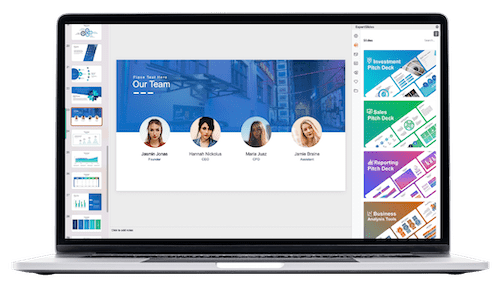Embed a Web-Based Video into a Presentation – Captivate Your Audience
Table of Contents
Visuals are a powerful tool in any presentation. They have the ability to captivate an audience and convey information in a way that is easily digestible and memorable. Research has shown that people are more likely to remember information when it is presented visually, making visuals an essential component of any successful presentation.
Whether it’s a graph, chart, or photograph, visuals can help to reinforce key points and make a presentation more engaging. In addition to static visuals, videos are an increasingly popular way to enhance presentations. Videos have the ability to bring a topic to life and provide a dynamic element that can capture the attention of an audience.
With the rise of online video platforms such as YouTube and Vimeo, there is a wealth of video content available that can be used to enhance presentations. By incorporating videos into presentations, presenters can create a more immersive and engaging experience for their audience.
Key Takeaways
- Embedding a web-based video into your presentation can captivate your audience and enhance engagement.
- Visuals are powerful in presentations and can help convey your message effectively.
- Choose the right video for your presentation by considering the content, relevance, and audience preferences.
- To seamlessly integrate videos, follow best practices and overcome technical challenges by testing beforehand.
- Maximize the impact of embedded videos by using them strategically to captivate your audience and enhance the overall presentation experience.
How to Embed a Web-Based Video into Your Presentation

Embedding a web-based video into a presentation is a relatively simple process that can greatly enhance the overall impact of the presentation. The first step is to find a suitable video that aligns with the content and message of the presentation. Once a video has been selected, it can be embedded into the presentation using presentation software such as Microsoft PowerPoint or Google Slides.
To do this, presenters can simply insert a video placeholder into their presentation and then link it to the web-based video using the video’s URL. When embedding a web-based video into a presentation, it’s important to consider the technical aspects of the video. For example, presenters should ensure that the video is compatible with the presentation software and that it will play seamlessly during the presentation.
Additionally, presenters should consider the length of the video and how it will fit into the overall flow of the presentation. By carefully selecting and embedding web-based videos, presenters can create a more engaging and impactful presentation.
Tips for Choosing the Right Video for Your Presentation

When choosing a web-based video to embed into a presentation, there are several factors to consider. First and foremost, presenters should ensure that the video aligns with the content and message of the presentation. The video should enhance the overall theme of the presentation and provide valuable information or insight that complements the presenter’s message.
Additionally, presenters should consider the length of the video and how it will fit into the overall flow of the presentation. A video that is too long or too short may disrupt the flow of the presentation and detract from the overall impact. In addition to content and length, presenters should also consider the quality of the video.
High-quality videos with clear audio and visuals will enhance the overall professionalism of the presentation and captivate the audience. It’s also important to consider the source of the video and ensure that it is from a reputable and reliable source. By carefully considering these factors, presenters can choose the right web-based video to embed into their presentation and create a more engaging and impactful experience for their audience.
Enhancing Engagement with Embedded Videos
| Platform | Features | Compatibility | Cost |
|---|---|---|---|
| YouTube | Customizable player, analytics, annotations | Works on most devices and browsers | Free |
| Vimeo | High-quality video, privacy options, customization | Works on most devices and browsers | Plans starting at 7/month |
| Wistia | Customizable player, analytics, lead generation | Works on most devices and browsers | Plans starting at 99/month |
Embedded videos have the power to enhance engagement in presentations by providing a dynamic and visual element that captures the attention of the audience. Videos can bring a topic to life and provide real-world examples that help to reinforce key points. By incorporating videos into presentations, presenters can create a more immersive experience that keeps the audience engaged and interested in the content being presented.
In addition to enhancing engagement, embedded videos can also help to make complex or abstract concepts more understandable. Videos have the ability to break down complex ideas into more digestible pieces and provide visual demonstrations that help to clarify information. This can be especially helpful for audiences who may struggle with understanding purely verbal or written information.
By using embedded videos, presenters can create a more inclusive and accessible presentation that resonates with a wider range of audience members.
Best Practices for Seamless Video Integration
To ensure seamless integration of embedded videos into presentations, presenters should follow best practices for video integration. This includes ensuring that the video is compatible with the presentation software being used and that it will play smoothly during the presentation. Presenters should also consider the placement of the video within the presentation and how it will fit into the overall flow of the content.
By carefully integrating videos into presentations, presenters can create a more cohesive and impactful experience for their audience. In addition to technical considerations, presenters should also consider how they will introduce and contextualize the embedded video within their presentation. Providing context for why the video is being shown and how it relates to the overall message of the presentation can help to ensure that the video has maximum impact on the audience.
By following best practices for seamless video integration, presenters can create a more polished and professional presentation that captivates their audience.
Overcoming Technical Challenges When Embedding Videos
While embedding web-based videos into presentations can greatly enhance their impact, there are also potential technical challenges that presenters may encounter. For example, compatibility issues between different presentation software or web-based videos may arise, leading to playback problems during the presentation. Additionally, internet connectivity issues may affect the ability to stream web-based videos during a live presentation.
To overcome these challenges, presenters should thoroughly test their embedded videos prior to their presentation to ensure that they play smoothly and without any technical issues. This may involve testing different internet connections or using alternative methods for embedding videos if compatibility issues arise. Additionally, presenters should have a backup plan in place in case technical issues prevent them from showing their embedded videos during their presentation.
By being prepared for potential technical challenges, presenters can ensure that their embedded videos have maximum impact on their audience.
Maximizing Impact: Using Embedded Videos to Captivate Your Audience
Ultimately, embedded videos have the power to captivate an audience and enhance the overall impact of a presentation. By carefully selecting and integrating web-based videos into their presentations, presenters can create a more engaging and immersive experience for their audience. Videos have the ability to bring topics to life, provide visual demonstrations, and make complex concepts more understandable, ultimately helping presenters to convey their message in a more impactful way.
In order to maximize impact, presenters should carefully consider factors such as content, length, quality, and source when choosing web-based videos to embed into their presentations. By following best practices for seamless video integration and being prepared for potential technical challenges, presenters can ensure that their embedded videos play smoothly and without any disruptions during their presentations. By leveraging embedded videos effectively, presenters can captivate their audience and create a more memorable and impactful presentation experience.
FAQs
What is a web-based video?
A web-based video is a video that is hosted on a website and can be accessed and viewed through a web browser.
What is a presentation?
A presentation is a visual and auditory display of information, often used to communicate a message or idea to an audience.
How can I embed a web-based video into a presentation?
You can embed a web-based video into a presentation by using presentation software that supports web-based video embedding, such as Microsoft PowerPoint or Google Slides. You can usually do this by inserting a video link or using an embed code provided by the video hosting platform.
Why should I embed a web-based video into a presentation?
Embedding a web-based video into a presentation can enhance the visual and auditory experience for your audience, make your presentation more engaging, and help you communicate your message more effectively.
What are some tips for embedding a web-based video into a presentation?
Some tips for embedding a web-based video into a presentation include ensuring that the video is relevant to your topic, testing the video playback before your presentation, and making sure that you have permission to use the video if it is not your own content.
Get 15+ Mio. PowerPoint Assets - FREE SIGN-UP

Sign up for free to our PowerPoint extension, ExpertSlides. Everything you need, directly in PowerPoint. No credit card required.
Related Posts
Recent Posts
- How Do You End a Presentation – Mastering the Last Impression
- Good Color Combinations for Presentations – The Science of Color
- Interesting Ideas for PowerPoint Presentation – Captivate Your Audience
- History Presentation Template – Step Back in Time
- Canvas Presentation Template – Unleash Your Creativity
Main Menu
Knowledge base
Useful Links






